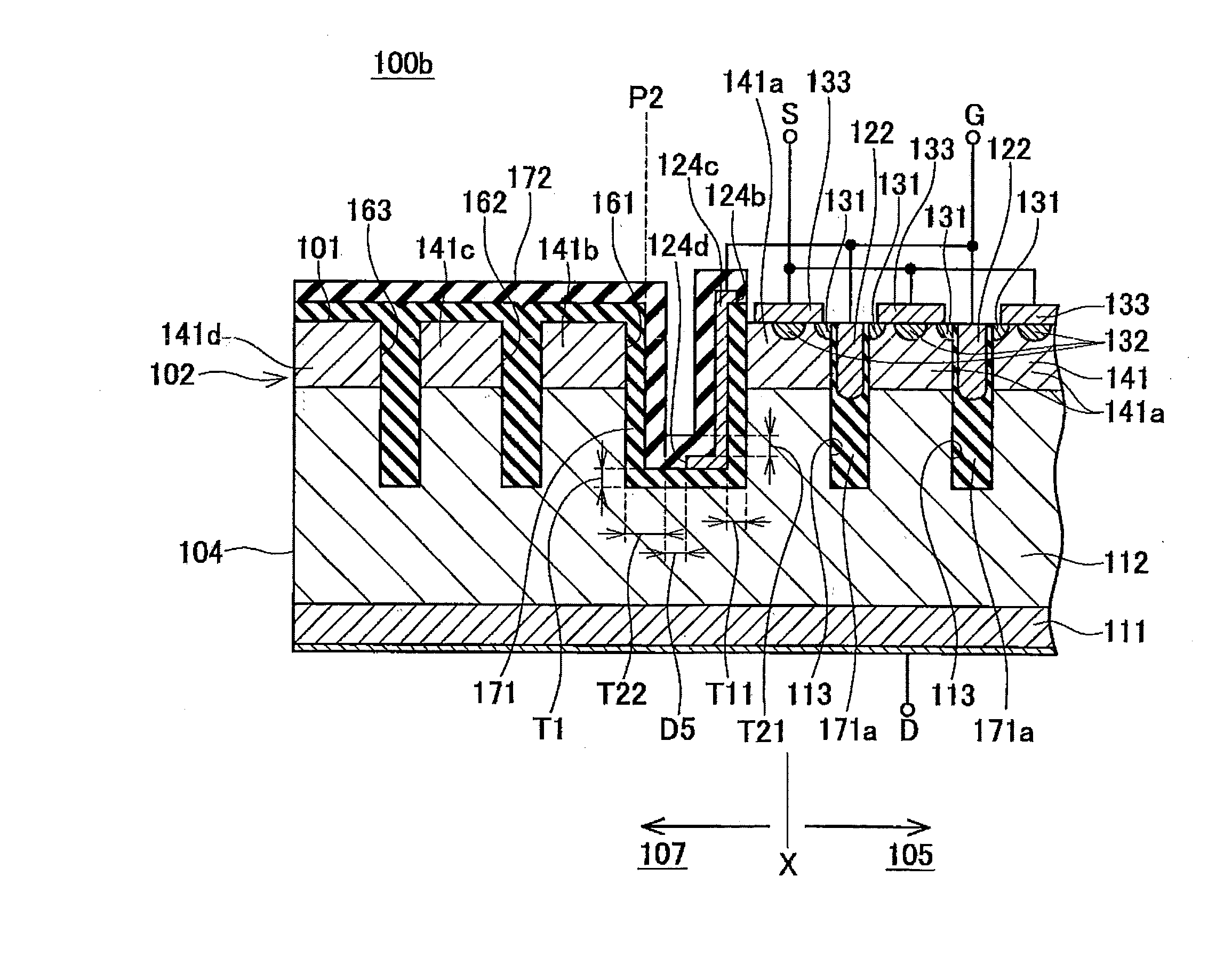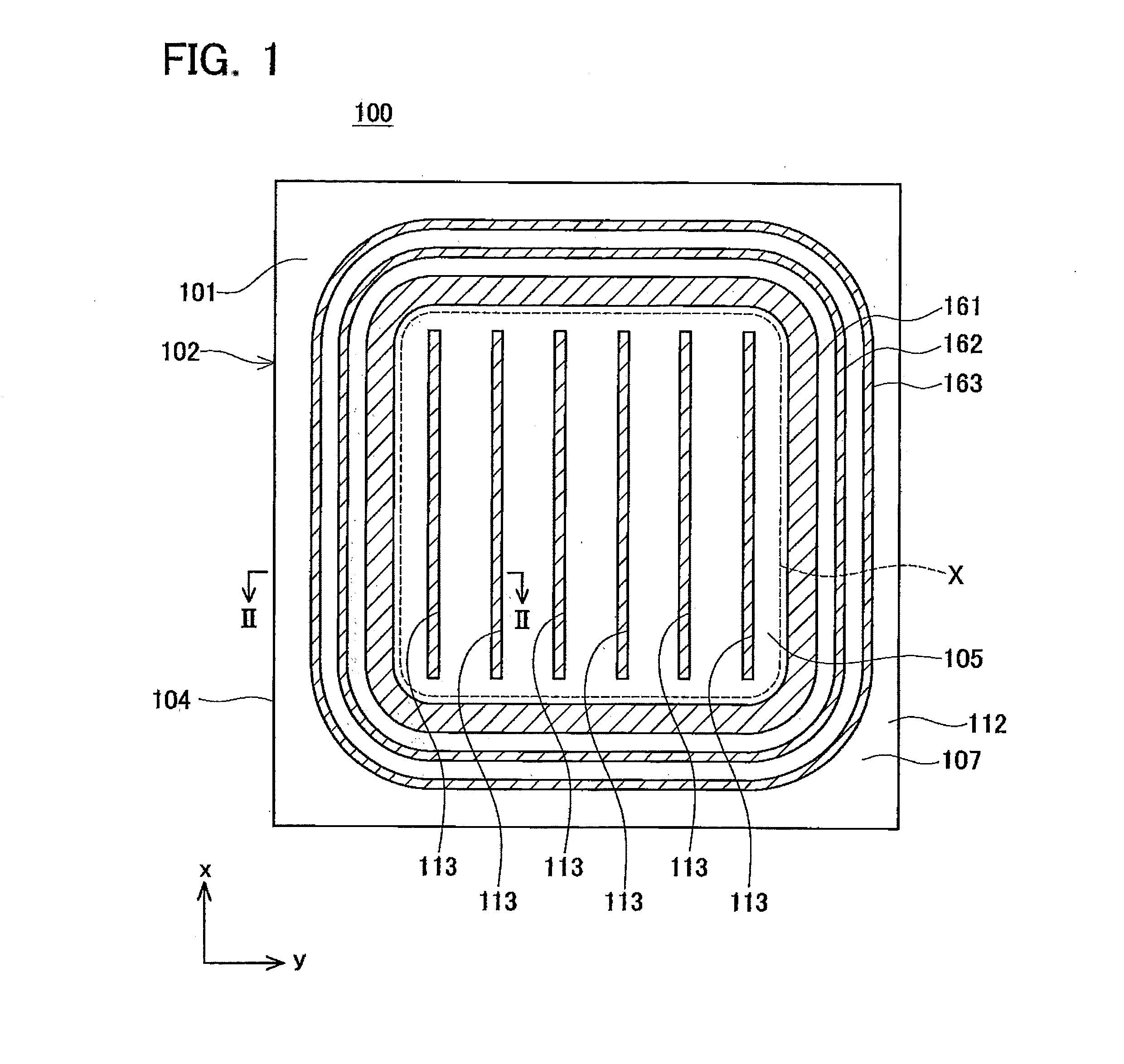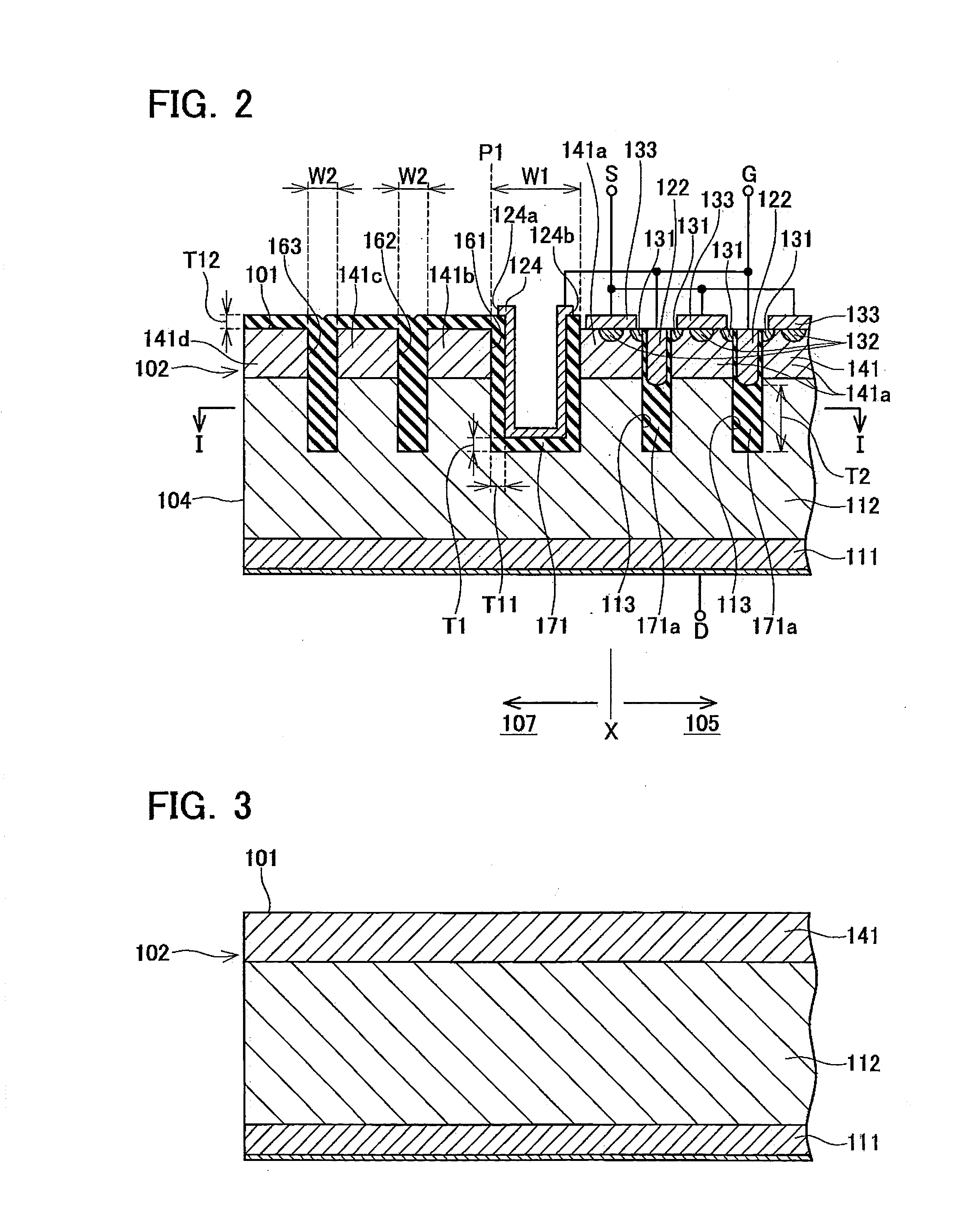Semiconductor device and method for manufacturing semiconductor device
- Summary
- Abstract
- Description
- Claims
- Application Information
AI Technical Summary
Benefits of technology
Problems solved by technology
Method used
Image
Examples
first embodiment
[0064]Below, a first embodiment of the semiconductor device which is a practical realization of the present teaching is described in detail with reference to the drawings. FIG. 1 is a plan diagram of the semiconductor device 100 according to the first embodiment. FIG. 2 is a cross-sectional diagram along line II-II in FIG. 1. More specifically, FIG. 1 corresponds to a cross-sectional diagram along line I-I in FIG. 2. In FIG. 1, the hatching relating to the drift region 112 is omitted.
[0065]As shown in FIG. 1, the semiconductor device 100 is manufactured by using a semiconductor substrate 102 having an outer circumference 104. The semiconductor substrate 102 is divided into a cell area 105 (inside the frame X indicated by the dotted lines in FIG. 1) in which a semiconductor structure performing a transistor operation is constructed, and a termination area 107 which surrounds this cell area 105.
[0066]The cell area 105 is formed in such a manner that six main trenches 113 extend in the...
second embodiment
[0100]A semiconductor device 100g relating to a second embodiment is now described in detail. As shown in FIG. 17, in the semiconductor device 100g, sidewalls and a bottom surface of a termination trench 161 are covered with an oxide film 171 and an interlayer insulating layer 172. Furthermore, upper portions of main trenches 113 are respectively covered with interlayer insulating layers 172b. A metal film 174 is formed so as to cover, in continuous fashion, a surface of the interlayer insulating layer 172 which covers the bottom surface and sidewalls of the termination trench 161, a surface of a body region 141a in a region to the inner circumference side of the termination trench 161, and surfaces of the interlayer insulating layers 172b which cover the main trenches 113. Furthermore, the metal film 174 is connected to a source electrode (not illustrated) and a source voltage is applied thereto. One example of the metal film174 is aluminum. It is also possible to use various other...
third embodiment
[0105]A semiconductor device 100b relating to a third embodiment is now described in detail. As shown in FIG. 12, in the semiconductor device 100b, sidewalls and a bottom surface of a termination trench 161 are covered with an oxide film 171. Furthermore, a buried electrode 124c is formed on a surface of the oxide film 171 which covers the sidewalls and bottom surface of the termination trench 161. The material of the buried electrode 124c is polysilicon. Furthermore, the buried electrode 124c is connected to a gate wire G.
[0106]The formation position of the buried electrode 124c is now described. An end portion 124d is formed in the buried electrode 124c. Here, when the semiconductor device 100b is observed from vertically above, the position of the surface of the oxide film 171 which covers the sidewall on the chip outer side (termination area 107 side) of the termination trench 161 is defined as position P2. The position of the end portion 124d is to the chip inner side of the po...
PUM
 Login to View More
Login to View More Abstract
Description
Claims
Application Information
 Login to View More
Login to View More - R&D
- Intellectual Property
- Life Sciences
- Materials
- Tech Scout
- Unparalleled Data Quality
- Higher Quality Content
- 60% Fewer Hallucinations
Browse by: Latest US Patents, China's latest patents, Technical Efficacy Thesaurus, Application Domain, Technology Topic, Popular Technical Reports.
© 2025 PatSnap. All rights reserved.Legal|Privacy policy|Modern Slavery Act Transparency Statement|Sitemap|About US| Contact US: help@patsnap.com



